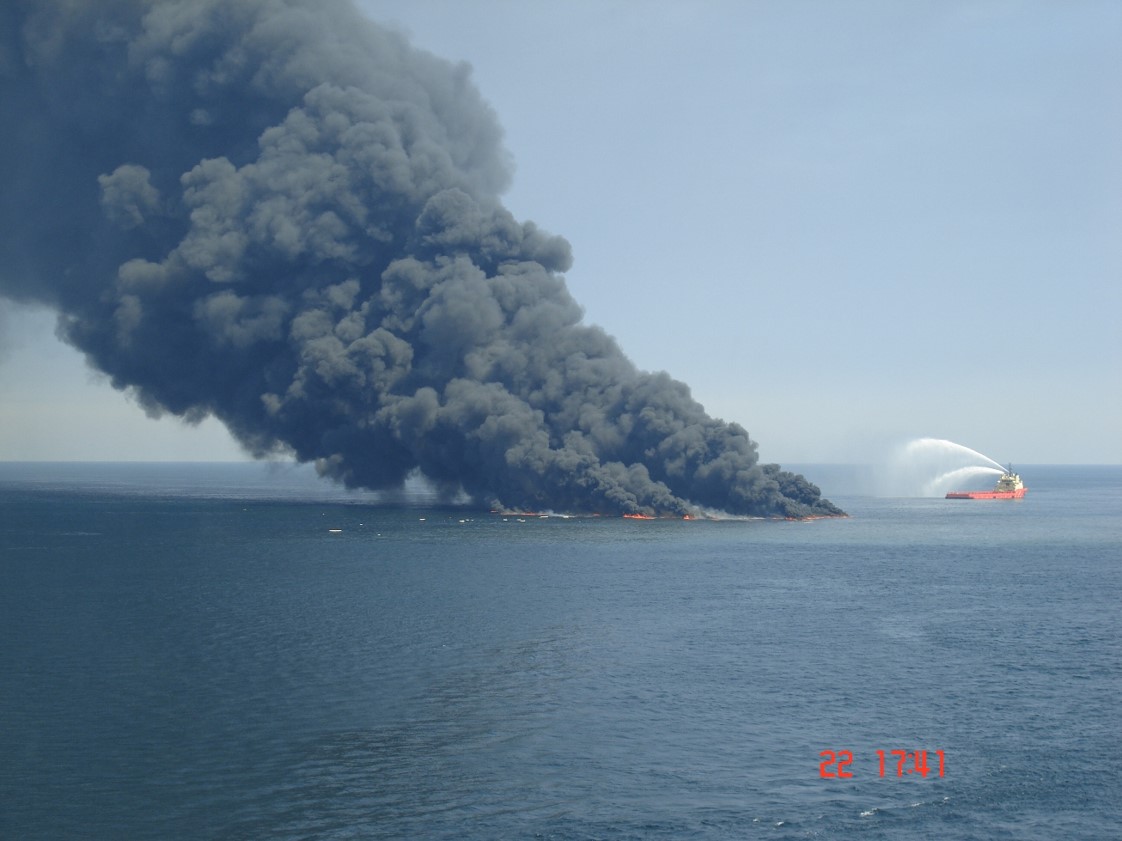Deepwater Horizon Retrospective, Part IV
May 19, 2015
April marked the five year anniversary of the Deepwater Horizon explosion in the Gulf of Mexico. As our Houston Jones Act lawyers report, the tragedy had a dramatic effect not just on the lives of the brave crew who worked on the vessel – 11 men aboard died and 17 were injured – but also thousands of people and businesses throughout the Gulf Coast.
This four-part series devoted will discuss some of the key factual findings and judicial holdings arising out of the “Macondo” incident, as follows:
- Part I: The Incident & Resulting Litigation
- Part II: Key Factual Findings
- Part III: Legal Fault
- Part IV: Other Legal Issues
PART IV: OTHER LEGAL ISSUES
The Texas Jones Act lawyers and Louisiana Jones Act lawyers at Morrow & Sheppard have been closely following the Deepwater Horizon litigation.
Aside from the overall liability under maritime law of defendants Transocean, BP, and Halliburton – including liability for offshore Jones Act personal injuries – Judge Barbier made several legal rulings that will affect the offshore drilling business for years to come.
Lawyers who handle Jones Act personal injury cases, as well as maritime personal injury cases, may be impacted by these holdings.
This article will focus on the following:
- Indemnity—Background
- Indemnity Clauses in the Deepwater Horizon Contract
- The Interpretation Question
- Can You Indemnify for Gross Negligence?
- Limitation of Liability Act—General Notes
- Court: Transocean Had “Privity or Knowledge”
- Transocean’s OPA Liability
***
Indemnity—Background
Indemnity is contractual protection against a future loss.
In offshore drilling contracts, operators (oil companies such as Exxon) historically have indemnified drilling contractors (such as Hercules Offshore) for all future losses arising from subsurface pollution. In other words, if an accident occurs on a Gulf of Mexico offshore drilling rig, and oil or other hydrocarbons are spilled, the oil company typically picks up the tab for the spill.
This protection is important for both drilling contractors and the general public, because unlike large oil companies, drillers often do not have the financial resources to remediate an oil spill such as the one that occurred following the Deepwater Horizon explosion.
In the Deepwater Horizon litigation, there was no question that BP’s subsurface pollution indemnity covered Transocean’s ordinary negligence. But two key questions arose related to BP’s indemnity obligations for Transocean’s gross negligence:
- Did the Deepwater Horizon drilling contract’s indemnity language cover Transocean’s gross negligence?
- Is it legal to indemnify for gross negligence?
Indemnity Clauses in Deepwater Horizon Contract
The general indemnity provision of the Deepwater Horizon contract provided:
- “Except to the extent any such obligation is specifically limited to certain causes elsewhere in this contract, the parties intend and agree that the phrase ‘shall protect, release, defend, indemnify and hold harmless’ means…unseaworthiness of any vessel or vessels…breach of contract, strict liability…or the negligence of any person or persons, including that of the indemnified party, whether such negligence be…gross”
The subsurface pollution indemnity provision provided:
- “[BP] shall assume full responsibility for and shall protect, release, defend, indemnify, and hold [Transocean] harmless…for pollution…without regard for negligence of any party or parties and specifically without regard for whether the pollution or contamination is caused in whole or in part by the negligence or fault of [Transocean].”
The Interpretation Question
BP claimed it was not liable for spill-related damages caused by Transocean’s gross negligence. BP’s reasoning was that the subsurface pollution indemnity was “specifically limited” to Transocean’s ordinary negligence, because while it specifically referenced Transocean’s “negligence or fault,” it did not specifically reference gross negligence.
Consequently, Judge Barbier had to interpret what was meant by “except to the extent any such obligation is specifically limited to certain clauses elsewhere in this contract?”
In short, Judge Barbier disagreed with BP’s position and held that the subsurface pollution provision covered Transocean’s gross negligence:
- “BP is required to indemnify Transocean for compensatory damages asserted by third parties against Transocean related to pollution that did not originate on or above the surface of the water, even if the claim is the result of Transocean’s . . . gross negligence.”
In his analysis, Judge Barbier distinguished the subsurface pollution indemnity provision from others that did specifically disclaim gross negligence, such as:
- 22.3 [Transocean’s] IN HOLE–EQUIPMENT. [BP] shall…indemnify…unless said loss of or damage is a result of [Transocean’s] negligence, gross negligence or willful misconduct in which case [Transocean] is solely responsible for all loss or damage.
- 23.1 LOSS OR DAMAGE TO THE HOLE. BP shall . . . indemnify. . . for loss or damage to the hole. Notwithstanding the previous sentence, if the hole is lost or damaged due to [Transocean’s] negligence, gross negligence . . . [Transocean] shall be obligated . . . to redrill.
Can you Indemnify for Gross Negligence?
Having determined that the Deepwater Provision indemnity covered Transocean’s gross negligence, Judge Barbie next had to decide whether the provision is legally enforceable–in other words, whether the law allows BP to indemnify Transocean for Transocean’s own gross negligence. The argument against such a provision is that it is bad public policy to allow people off the hook for their own gross negligence.
The Court began its analysis by noting that there is a difference between a “release” of liability which means nobody has to pay, and an “indemnity” agreement that simply specifies which party has to pay:
- “It is important, however, to distinguish between . . . exculpatory clauses [i.e., releases] and indemnity clauses that simply shift the source of compensation without restricting the injured party’s right to recover.”
The Court ultimately held indemnity for gross negligence is permitted, but a release of gross negligence is not permitted. The upshot is that a party injured by gross negligence always has a defendant to sue, but the entity sued might not be the one that pays the damages. The Court noted that to cover gross negligence, the indemnity provision must include an explicit reference to gross negligence, citing the Todd Shipyards case.
The Court also noted that while BP could indemnify Transocean for compensatory damages arising from gross negligence, it could not indemnify Transocean for punitives or Clean Water Act penalties.
Limitation of Liability Act—General Notes
Where it applies, the Limitation of Liability Act limits a vessel owner’s liability to the vessel value plus freight (or $420 times tonnage for personal injury claims). The Limitation of Liability Act does not apply to Oil Pollution Act penalties.
The cap under the Limitation of Liability Act is removed if the vessel owner has “privity or knowledge,” which includes:
- “complicity in fault that caused the accident”
- what managing officers knew or should have known regarding the conditions or actions likely to cause the loss
If the plaintiff proves fault and harm, the vessel owner must prove a lack of privity or knowledge
Court: Transocean Had “Privity or Knowledge”
Judge Barbier found Transocean possessed the required “privity or knowledge” to bust the Limitation of Liability cap, citing the following failures:
- Failure to Divert: the drill crew failed to divert the flow of hydrocarbons overboard, and Transocean was aware its crews lacked the proper diverter training
- Transocean failed to line up the diverter to discharge overboard prior to the critical operation of displacing the well
- Transocean’s policy was to keep the diverter lined up with the mud gas separator instead
- Transocean failed to have an automatic divert overboard once the mud gas separator pressure reached a certain limit
- Poor Maintenance
- Transocean failed to replace BSR batteries in the yellow pod
- Transocean failed to properly wire the blue pod
- Transocean’s Captain Failed to Timely Activate the Emergency Disconnect Sequence (EDS)
Transocean’s Oil Pollution Act Liability
A big issue in the Deepwater Horizon Litigation was responsibility for legal penalties under the Oil Pollution Act of 1990.
Judge Barbier found Transocean was not responsible for removal costs or damages as an Oil Pollution Act “responsible party” under the general liability provision regarding subsurface discharge of oil.
But Transocean was responsible for removal costs, without limit, as an “owner or operator” that permitted oil discharges from an Outer Continental Shelf facility.
The issue was moot, however, because Transocean’s liability for removal costs was shifted to BP by the contractual indemnity.
Morrow & Sheppard LLP Represent Injured Offshore Workers
Morrow & Sheppard are Texas Jones Act lawyers who represent injured offshore workers and their families. We have membership in the Maritime Law Association. We also have unique experience, having spent years working for individuals, as well as past careers as partners at prestigious firms, where we worked for the large corporations that now pay compensation to the clients we represent.
Please contact us now for a 100% free and confidential consultation.
- Home
- |
- Personal Injury
- |
- Deepwater Horizon Retrospective, Part IV
















































